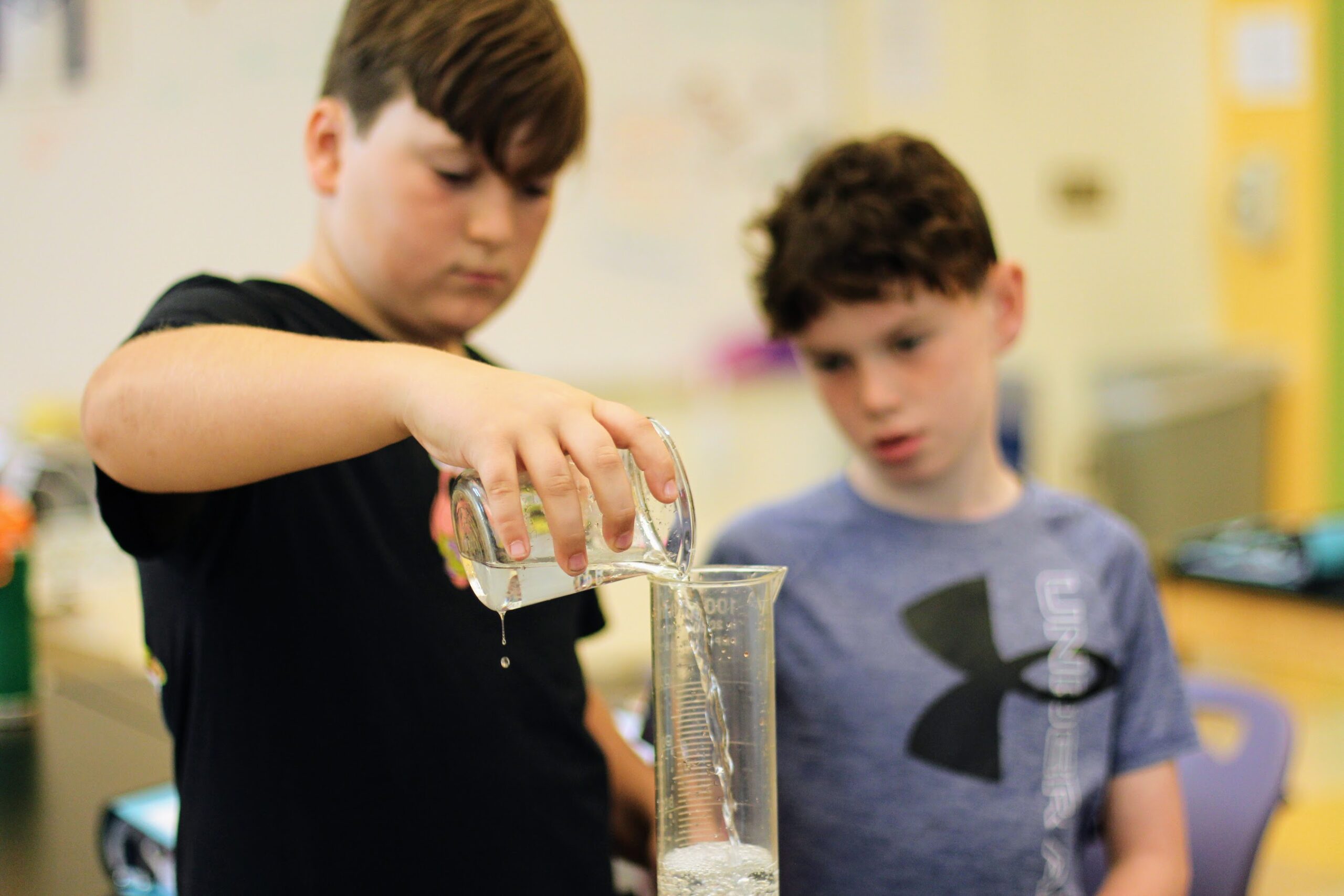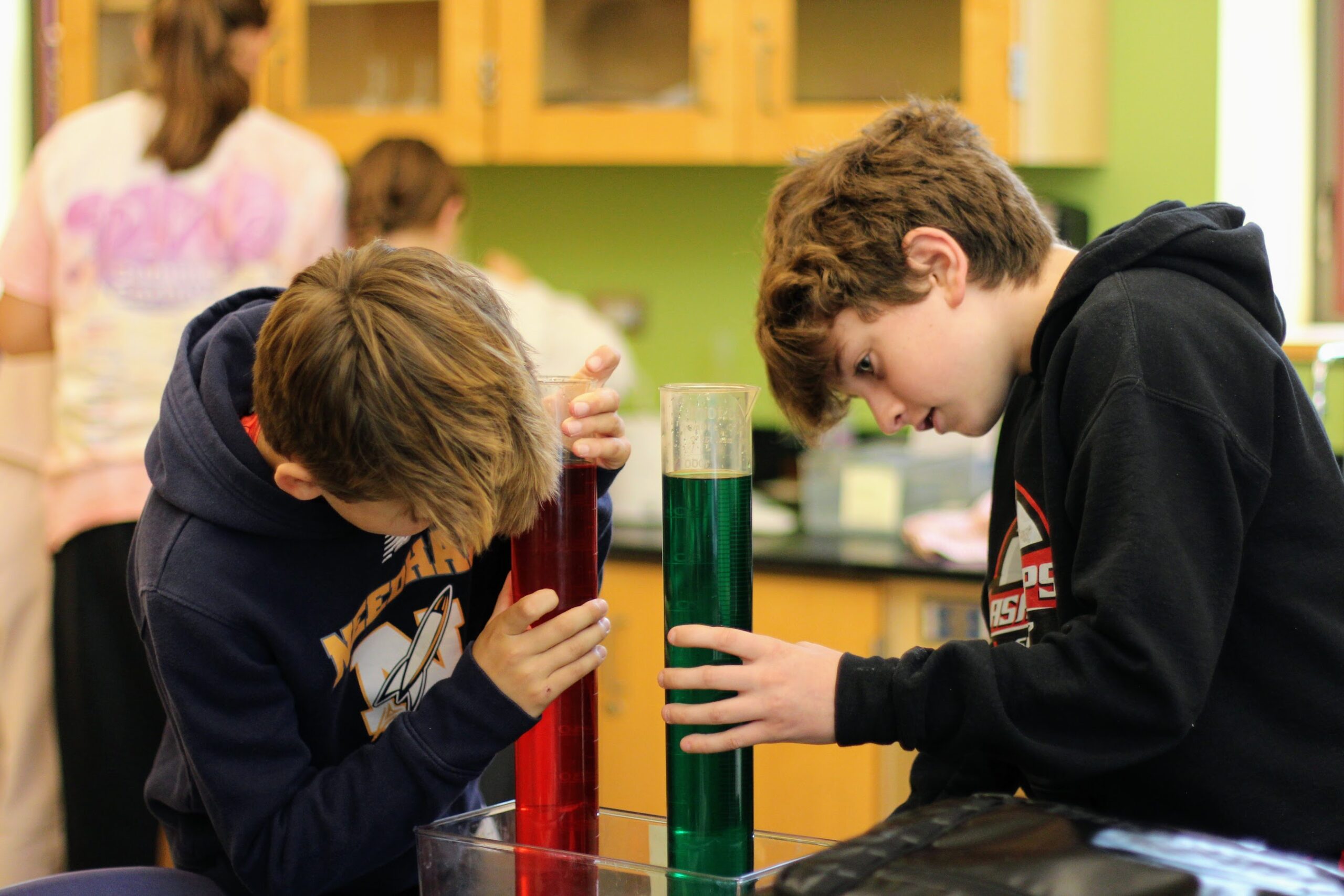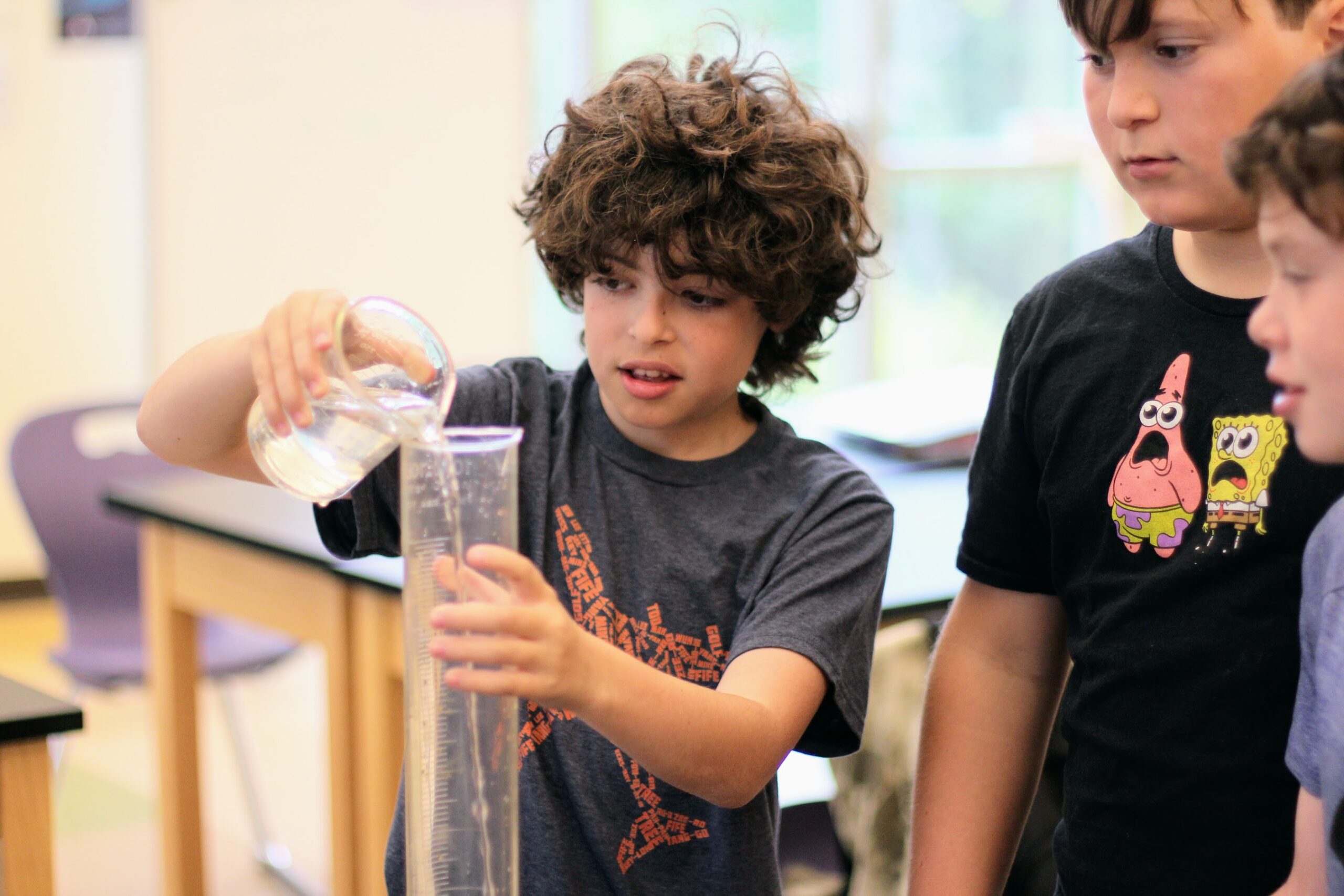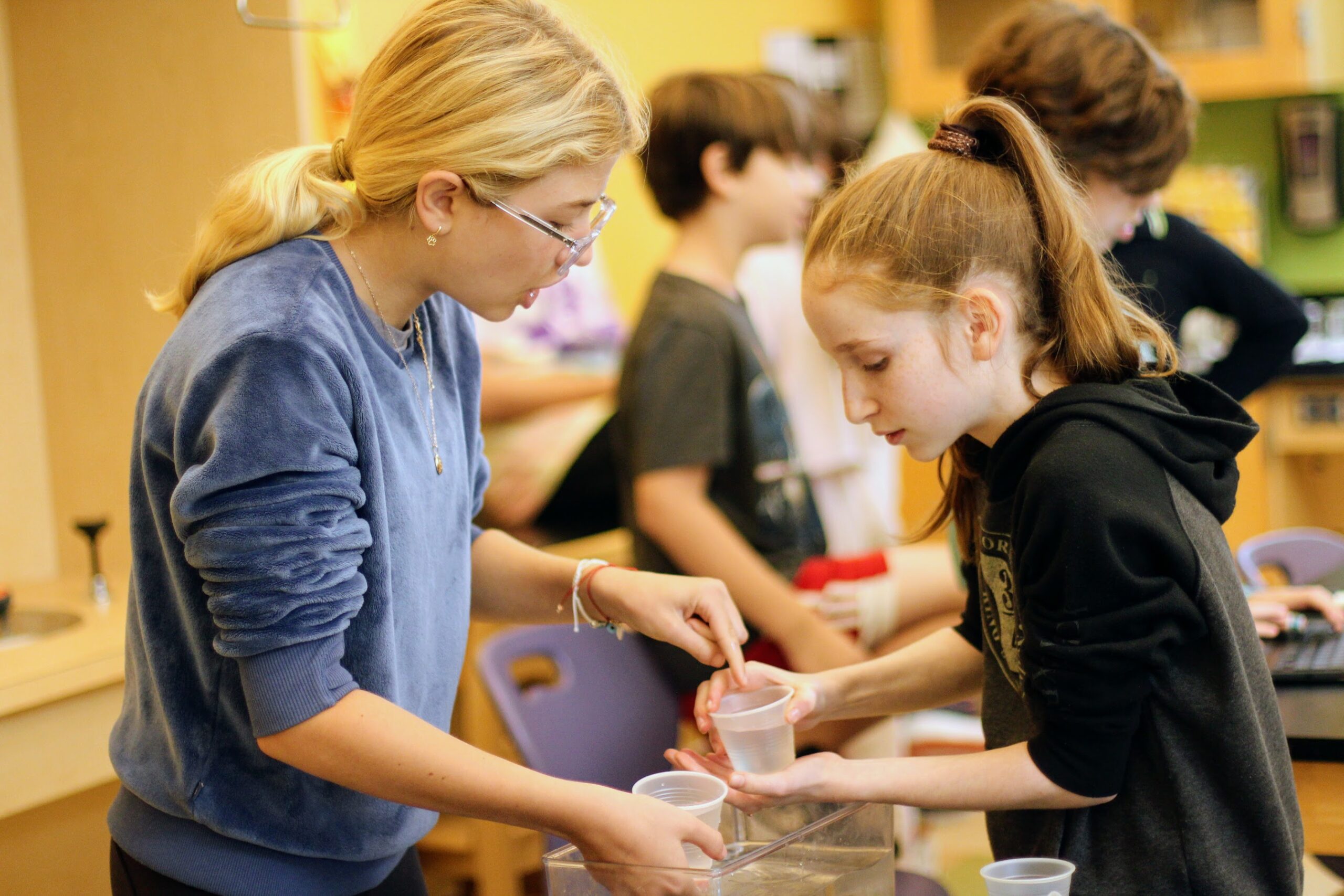The first unit of the school year in Grade 6 science is about physical oceanography. Students begin with density, then density driven ocean currents, followed by wind driven ocean currents. They then see how climate is affected by ocean currents, and look at the geology of the seafloor.

The learning kicks off with an inquiry-based assignment, through which the students discover that liquids will break into layers by density, and that density can be calculated as mass/volume. They take that understanding of density and design their own seawater lab that further explores how density can affect water, and what variables might impact the density of seawater in the ocean. Students in small groups choose their own approach, listed variables, constants, materials, and create a procedure to test these.
Topics students can choose to focus on through these experiments include:
- How does salinity affect density (measured with refractometer or a hydrometer)
- Will wind affect the density of seawater
- How does salinity affect the movement of water
- How does temperature affect the movement of water (“how molecules move/interact”)
- Will salinity change when temperature changes
- Will seafloor composition affect density
“We are learning about the density of water and how much space it takes up. We’re also learning about how temperature affects the coral reefs, and looking at solutions,” said student Chloe P.
“Some of these experiments will show that there is no effect,” said Middle School science teacher Deb Berlin. “I teach that even that sort of result provides important information: ‘okay, so we learned that seawater salinity does affect density, but wind doesn’t seem to in a meaningful way.’ Other groups will find changes that may surprise them, like how temperature does impact density.”
The results of these tests lead the class to further narrow their focus. At Rashi, the lab parameters are specific, and data will be fairly consistent, which will lead to the class’s understanding of density-driven ocean currents.
“My group compared warmer water with higher salinity, and colder water with higher salinity, and then warmer and colder water with lower salinity, and saw how much space each took up. It was really interesting,” said Chloe. “We found out that colder water, with both high and low salinity, was denser.”
“Students love being able to work with their own experimental designs,” said Deb. “I’ve had students come in and say ‘wait, are we doing another experiment today? Are we doing more of these?’ And the beautiful thing is that simultaneously, students are wrestling with challenging concepts—what should I do if my first trial doesn’t work quite right? How do I control the things that I’m not focusing on in the experiment? How can I best measure this effect?”

Rashi’s Grade 6 science curriculum is deeply intertwined with the grade’s essential question: What brings a system to collapse: Failing forward. The students gain the understanding that science is all about failing forward. Results don’t always end up the way you expect, variables change, and we are constantly reassessing, retesting, and relearning.
The unit also ties back into Rashi’s staple social justice curriculum—highlighting environmental justice. By seeing how temperature affects water density, students can think about how climate change will affect our oceans, and how we can “fail forward” by supporting each other and mitigating climate change’s impact.
Remarked Deb: “I love teaching physical oceanography in this grade! This unit builds experimental and lab skills and provides students with experiences that lead to incredibly important conceptual understandings that they’ll revisit throughout the rest of their career as science students.”



